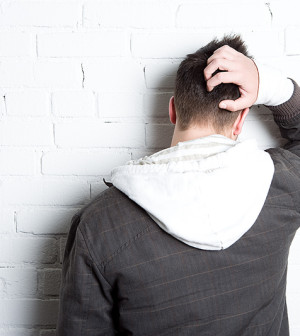- Navigating Your Midlife Crisis: Embracing New Possibilities
- City Raccoons Showing Signs of Domestication
- Mapping the Exposome: Science Broadens Focus to Environmental Disease Triggers
- One Week Less on Social Media Linked to Better Mental Health
- Your Brain Changes in Stages as You Age, Study Finds
- Some Suicide Victims Show No Typical Warning Signs, Study Finds
- ByHeart Formula Faces Lawsuits After Babies Sickened With Botulism
- Switch to Vegan Diet Could Cut Your Greenhouse Gas Emissions in Half
- Regular Bedtime Does Wonders for Blood Pressure
- Dining Alone Could Mean Worse Nutrition for Seniors
Doctors Say Head Lice Should Not Bar Kids From School


Outbreaks of head lice in kids can be effectively treated without banning infected children from school, new guidelines from the American Academy of Pediatrics (AAP) say.
In fact, the AAP believes that doctors and other health care professionals should educate schools and communities that “no-nit” policies are unfair and should not be implemented.
Children found to have head lice or nits can finish the school day, be treated and return to school, the AAP says.
As for treatment, the first choice for active live infestations should be over-the-counter medicines containing 1 percent permethrin or pyrethrins. After applying the product, parents should follow with nit removal and wet combing. The treatment should be reapplied at day 9, and again at day 18 if needed.
In areas where lice are known to be resistant to such products, or when treatment efforts fail, parents should talk to their doctor about a new prescription medications such as spinosad or topical ivermectin.
Dr. Dassi Leader is director of inpatient pediatrics at Staten Island University Hospital in New York City. He said that many strains of head lice have already grown resistant to permethrin.
“Many of our unwanted scalp visitors simply won’t be killed by this long trusted and safe treatment,” Leader said. “Permethrin still may be a good place to start — it’s safe, cheap and over-the-counter. But if the lice are still happily crawling, your pediatrician has other options the lice may not be expecting.”
If head lice are discovered on one family member, all household members should be checked, the AAP added. The use of home pesticides is not recommended, but washing pillow cases and treating natural bristle hair brushes are reasonable measures, the group said.
Also, teaching children not to share personal items such as combs, brushes and hats can help reduce the risk of head lice. Regular checks by parents can help in quick detection and treatment of head lice infestations.
“The other reality check hidden in the guideline that deserves a spot light is that nothing has replaced the good old fashioned method of ‘nitpicking,’ ” Leader said. “Manually removing every last louse and nit works, and may never go out of style.”
Another expert stressed that parents and children should not overreact to a case of head lice.
“Lice create unfounded anxiety among students, parents and school personnel,” said Dr. Ron Marina, associate chair of pediatrics at Winthrop-University Hospital in Mineola, N.Y. “They are a nuisance and not a significant health hazard. Common sense and over-the-counter medications is generally enough to contain and treat this problem.”
The new guidelines are published online April 27 and in the May print issue of the journal Pediatrics.
More information
The U.S. Centers for Disease Control and Prevention has more about head lice.
Source: HealthDay
Copyright © 2025 HealthDay. All rights reserved.










